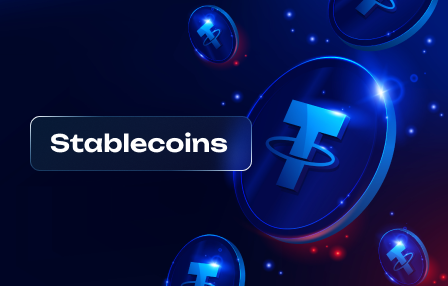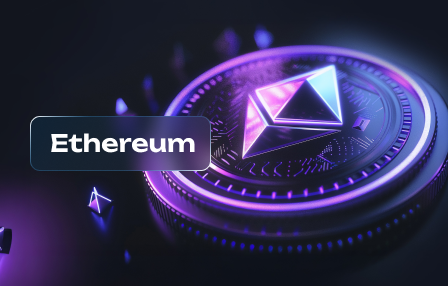Crypto use cases beyond trading and investing
June 4, 2025
The potential of blockchain technology extends far beyond traditional trading platforms. Innovations in security and decentralization are paving the way for novel applications that enhance various sectors. Consider integrating digital identities on the blockchain; this allows for secure transactions while maintaining user privacy. These identity solutions eliminate fraud and streamline verification processes across industries.
Utility tokens are emerging as vital components in creating decentralized finance (DeFi) ecosystems, where users can lend, borrow, and earn interest without intermediaries. This innovation not only reduces costs but also enhances accessibility to financial services globally. The applications of smart contracts further extend into supply chain management, ensuring transparency and traceability from production to delivery.
Moreover, leveraging blockchain for secure data sharing transforms how businesses manage sensitive information. In healthcare, patient records can be securely stored and accessed only by authorized personnel, enhancing both security and efficiency in medical transactions. As these use cases proliferate, they redefine our understanding of finance and identity in a digital economy.
Decentralized Finance Applications
Smart contracts are at the core of decentralized finance (DeFi) applications, enabling programmable transactions that execute automatically based on predefined conditions. These contracts eliminate intermediaries, enhancing transaction speed and reducing costs.
One significant use case is lending platforms, where users can lend or borrow assets without traditional banks. Protocols like Aave and Compound allow for peer-to-peer transactions, providing liquidity to borrowers while compensating lenders with interest accrued through smart contracts.
Another area of innovation is decentralized exchanges (DEXs) such as Uniswap and SushiSwap. These platforms facilitate trading directly between users via smart contracts, ensuring greater privacy and control over funds. By utilizing liquidity pools, traders can execute transactions without relying on centralized order books.
Identity verification also benefits from DeFi applications. Solutions like uPort leverage blockchain technology to create self-sovereign identities, allowing users to manage their personal information securely while engaging in financial activities. This enhances trust and reduces fraud in online transactions.
The integration of utility tokens within these applications adds another layer of functionality. Tokens can be used for governance, transaction fees, or staking rewards, incentivizing participation in the ecosystem while fostering community-driven development.
The decentralization aspect not only provides transparency but also democratizes access to financial services globally. Users in underbanked regions can utilize DeFi applications to access loans and investment opportunities previously unavailable through traditional channels.
In summary, DeFi applications illustrate the potential of blockchain technology to transform finance by offering innovative solutions that enhance accessibility, security, and efficiency in transactions across various sectors.
NFTs in Digital Art
Utilizing blockchain technology, NFTs (Non-Fungible Tokens) provide a unique solution for digital artists to establish ownership and authenticity. Each NFT is a distinct asset registered on the blockchain, enabling artists to tokenize their work and sell it directly to collectors without intermediaries. This decentralization enhances financial transparency and allows for innovative transaction methods through smart contracts.
The integration of NFTs in digital art not only transforms the way art is bought and sold but also redefines artist identity. Artists can embed royalties into their smart contracts, ensuring they receive a percentage from future resales. This utility incentivizes creators while fostering a sustainable economic model within the digital art community.
Beyond transactions, NFTs facilitate new applications such as virtual galleries and immersive experiences where collectors can showcase their acquisitions. These platforms leverage blockchain’s security to ensure provenance, further enhancing the value proposition of digital artworks.
Investors are increasingly recognizing the potential of NFTs as assets that blend culture with finance. As this sector evolves, the demand for unique digital creations continues to rise, creating opportunities for both established artists and newcomers alike.
Blockchain for Supply Chains
Implementing blockchain technology in supply chains enhances transparency, security, and efficiency across all stages. Here are key applications to consider:
- Traceability: Blockchain allows real-time tracking of products from origin to consumer, ensuring authenticity and reducing fraud.
- Smart Contracts: Automate transactions and agreements between parties, minimizing disputes and streamlining processes.
- Decentralization: Reduces reliance on intermediaries, enabling direct interactions between suppliers and consumers.
- Identity Verification: Blockchain provides a secure method for verifying the identity of participants in the supply chain, enhancing trust among stakeholders.
- Data Security: Immutable records protect sensitive information from unauthorized access or tampering.
The integration of blockchain can lead to significant cost savings by optimizing logistics and reducing delays. Companies like Walmart have successfully implemented blockchain for tracking food products, showcasing its utility in enhancing food safety. Moving forward, businesses should explore partnerships with blockchain platforms to harness these innovations effectively.
As the landscape of supply chain management evolves, leveraging blockchain will become increasingly critical for maintaining competitive advantages in finance and operational integrity.
Tokenization of Real Assets
Implementing tokenization through blockchain technology enables the representation of real assets as digital tokens, facilitating their trade and management. This approach enhances liquidity and accessibility in finance by allowing fractional ownership, making high-value assets available to a broader audience. Smart contracts automate transactions, ensuring security and transparency while reducing administrative overhead.
Real estate exemplifies a prime use case; properties can be tokenized to simplify investment opportunities. Investors can purchase fractions of properties, diminishing barriers to entry. Platforms like RealT demonstrate this concept, providing investors with utility tokens that represent ownership rights and income from real estate assets.
Artworks and collectibles also benefit significantly from tokenization. By creating NFTs that represent ownership, artists can secure provenance and authenticity while reaching global markets. This creates direct revenue streams without intermediaries. Projects like Myco illustrate how art can be democratized through blockchain applications.
Tokenized commodities such as gold or oil offer another layer of diversification in asset management. These tokens can be easily traded on decentralized exchanges, enhancing security against price volatility and fraud associated with physical goods. The integration of identity verification within these platforms further ensures that transactions are safe and compliant with regulations.
The future of finance lies in the seamless integration of these tokenized assets into existing financial systems, promoting decentralization and innovation across various sectors. As adoption grows, businesses must focus on developing robust infrastructures to support these applications while addressing regulatory challenges inherent in tokenizing real-world assets.



